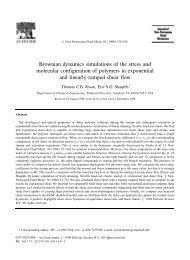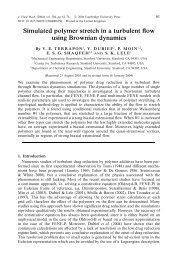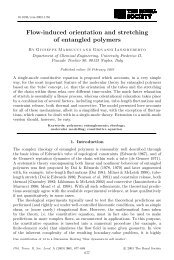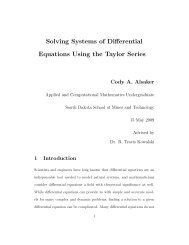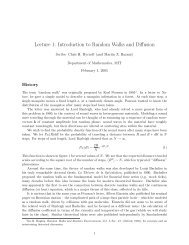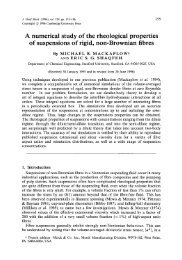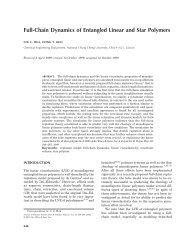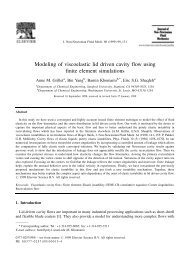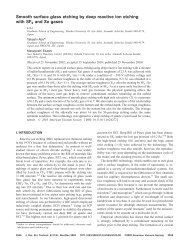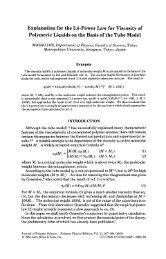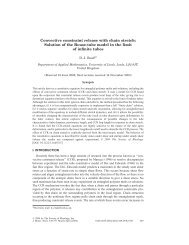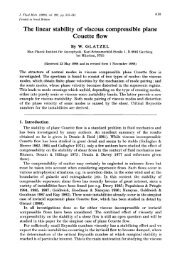Molecular modelling of entangled polymer fluids under flow The ...
Molecular modelling of entangled polymer fluids under flow The ...
Molecular modelling of entangled polymer fluids under flow The ...
You also want an ePaper? Increase the reach of your titles
YUMPU automatically turns print PDFs into web optimized ePapers that Google loves.
44 CHAPTER 2. INTRODUCTION TO MOLECULAR RHEOLOGY<br />
N e segments <strong>of</strong> length b, leading to N e b 2 = a 2 . As long as N e is reasonably large the<br />
fluctuations in the length a will be small. Under this rescaling, the probability density<br />
<strong>of</strong> the end to end vector R can be shown to be (see Doi and Edwards (1986) equation<br />
2.36)<br />
Ψ(R) =<br />
This is has the same form as equation 2.2 with<br />
( ) 3 3/2 )<br />
2πZa 2 exp<br />
(− 3R2<br />
2Za 2 . (2.48)<br />
b → a<br />
N → Z.<br />
(2.49)<br />
Hence all <strong>of</strong> the results presented in this chapter can be re-derived for a Gaussian chain<br />
which is coarse grained on the tube diameter, a, by using the above result.<br />
For example, the Rouse spring force term can be rewritten for a chain which is<br />
course grained to step length a.<br />
This is needed later on see appendix 2.III and in<br />
chapter 4 where I derive a generalised version <strong>of</strong> the MMcL model. Each bead now<br />
contains N e monomers and so the friction per bead becomes ζ 0 N e . Using the above<br />
result equation 2.13 rescales to<br />
∂R<br />
ζ 0 N e<br />
∂t = 3k BT<br />
a 2<br />
∂ 2 R<br />
+ ... (2.50)<br />
∂s2 where R continues to ( measure a real ) distance. Introducing the Rouse time <strong>of</strong> an<br />
entanglement segment τ e = ζ 0b 2 Ne<br />
2<br />
3π 2 k B<br />
and using the relation a 2 = N<br />
T<br />
e b 2 gives<br />
∂R<br />
∂t = 1 ∂ 2 R<br />
+ ... (2.51)<br />
πτ e ∂s2 Alternatively the same result can be obtained by the following method.<br />
Equation<br />
2.13 can be rewritten as<br />
ζ 0<br />
∂R<br />
∂t = 3k BT<br />
b 2 N 2 e<br />
which is consistent with equation 2.51.<br />
∂ 2 R<br />
∂(n/N e ) 2 + ...<br />
= 1<br />
πτ e<br />
∂ 2 R<br />
∂s 2 + ... (2.52)<br />
Appendix 2.III<br />
Obstructed diffusion<br />
In this appendix I will derive the Rouse-like Langevin equation for a Rouse chain in<br />
a tube experiencing constraint release at a single rate.<br />
<strong>The</strong> problem was solved by



